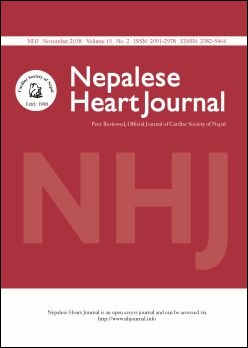Pioneers and champions for the little hearts: A history of pediatric cardiology in Nepal
DOI:
https://doi.org/10.3126/njh.v15i2.21468Abstract
Heart disease in a child requires complex set of expertise as physiology and challenges presented in pediatric cardiology are much different from adult cardiology. In preclinical era of renaissance, children and adults were examined by the same physician. At the outset of 20th century, the need for a special center for children with heart disease was identified as several authors began to add specific sections devoted to congenital heart disease in books of anatomy and pediatrics. A major milestone was reached when Helen Taussig, in charge of cardiac clinic in Harriet Lane Hospital, Baltimore, USA, established pediatric cardiology center for the first time. Pediatric cardiology gained further prominence in 1938 when Robert Gross successfully ligated the patent ductus arteriosus in a seven year old girl. The first successful creation of systemic to pulmonary shunt by Blalock and Taussig in 1944 boldly introduced surgical interventions. The field of pediatric cardiology has been making remarkable developments, with dramatic improvements in diagnostic tools, and with cardiac surgeons constantly pushing the envelope, culminating in being first subspecialty board of pediatrics in USA in 1961. These developments have changed the outlook of cardiac diseases in children and instilled hope for cure in previously untreatable disorders. Interestingly, advances made in pediatric cardiology have provided
Downloads
Downloads
Published
How to Cite
Issue
Section
License
This license enables reusers to distribute, remix, adapt, and build upon the material in any medium or format, so long as attribution is given to the creator. The license allows for commercial use.




